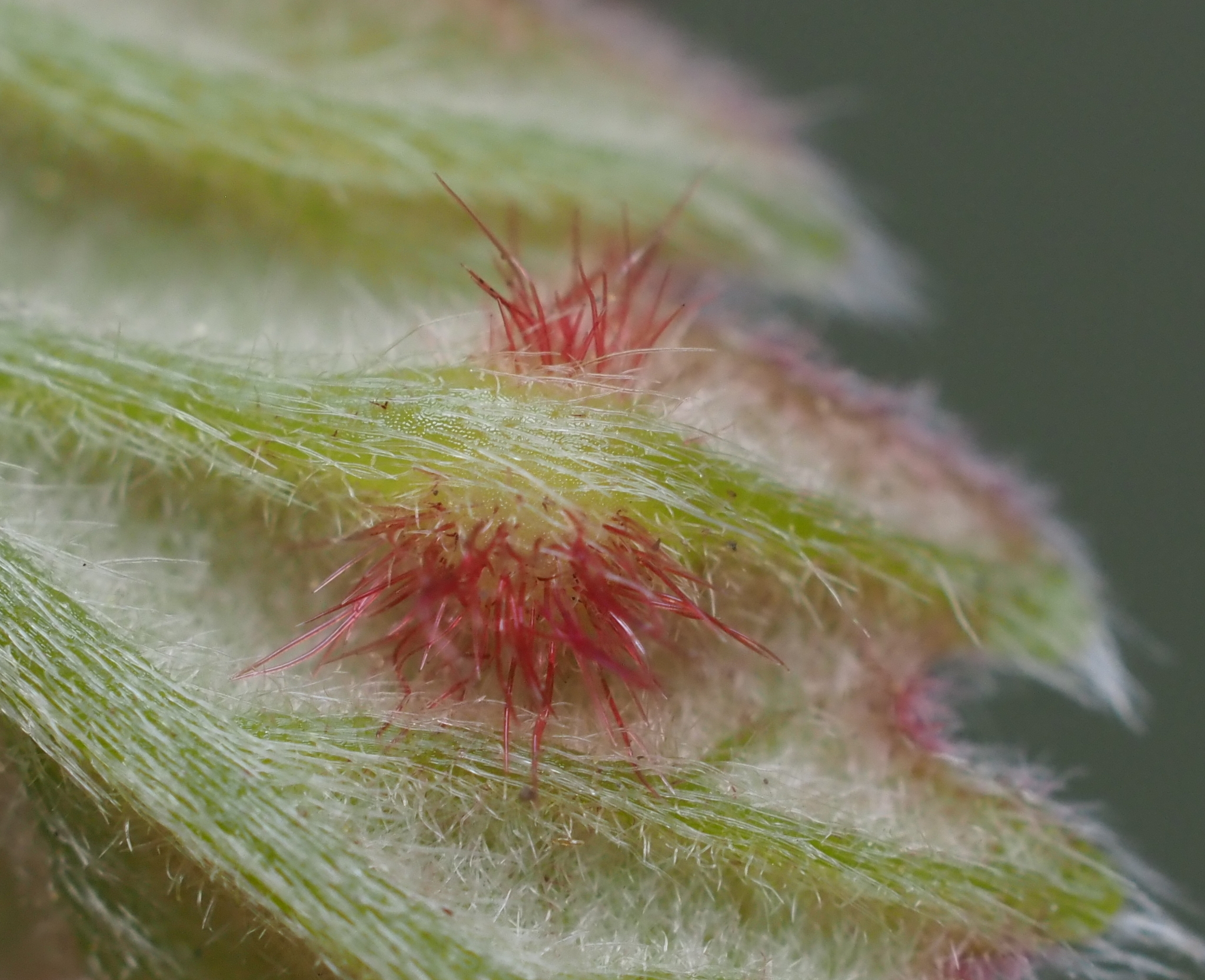Neuroterus fugiens (sexgen)
Neuroterus fugiens, new species
Host.--Quercus macrocarpa
Gall (fig 29).--A lens-shaped thickening in the parenchyma of a leaf always adjacent to a vein. Single or more or less confluent in a row. Most conspicuous from the lower side where rose-red hairs show against its translucent white background. On upper surface showing a very slight swelling only and only a slightly lighter green color. Exit hole above where wall is thinnest. Causes wrinkling and deformation of the leaf if numerous. Occurs in spring when young leaves are about one-third grown.
Habitat. — The type material is from galls collected on Q. macrocarpa at Willow Springs, IL., May 24, 1919, when some of the cells contained larvae and others pupae. The adults issued by May 30. The galls were seen also at Evanston.
Biology. — On June 16, 1916, empty galls on burr oak were seen at Evanston and on the same stump sprouts were found half-grown galls of the saltarius described above suggesting that this is the alternating generation of that species. On May 28, 1916, at Evanston on the small lower branches from the trunk of a tree of Q. bicolor these galls were found, some with exit holes and others containing pupae. Adults apparently from these galls were seen ovipositing on the under side of the leaves which were then about 3 inches long. Unfortunately none of the flies was preserved. Old leaves on the ground bore evidence of the presence of the jumping gall the previous fall. Experimental proof of this suggested life history is needed as the adults seem to go in the subgenus Diplobius., created for species whose alternating galls are practically identical.
”- LH Weld: (1926) Field notes on gall-inhabiting cynipid wasps with descriptions of new species©
Reference: https://www.biodiversitylibrary.org/page/7610635#page/280/mode/1up




